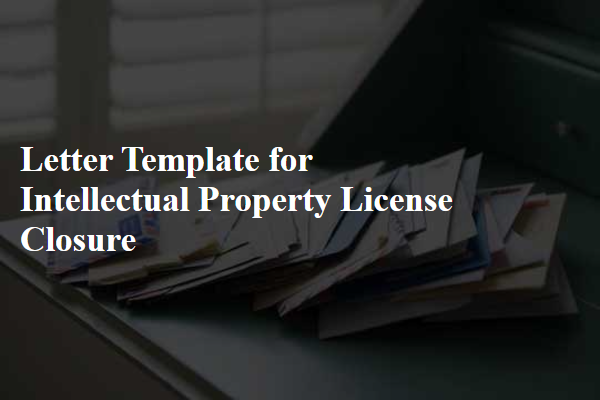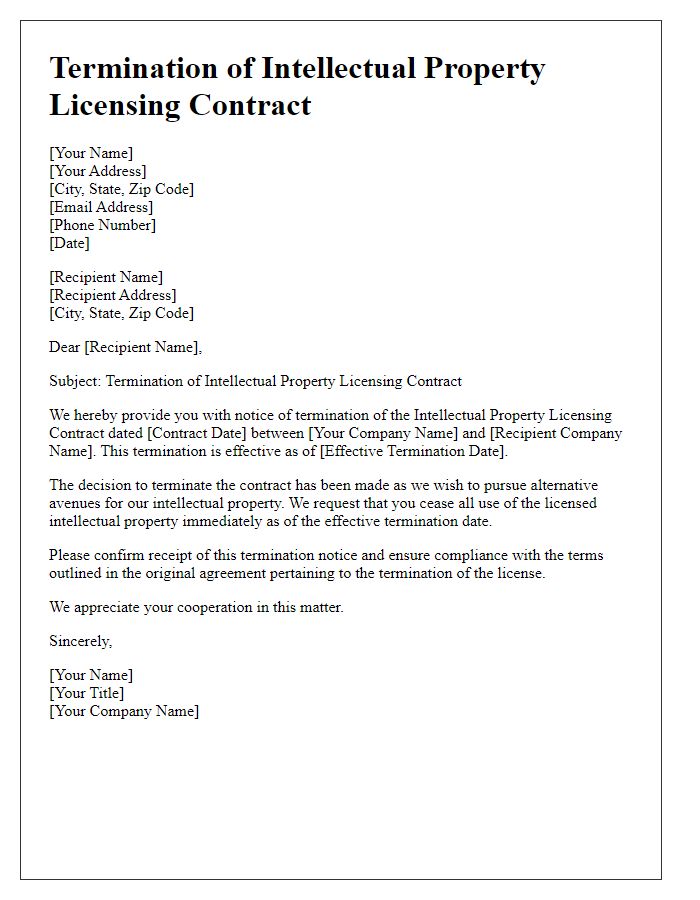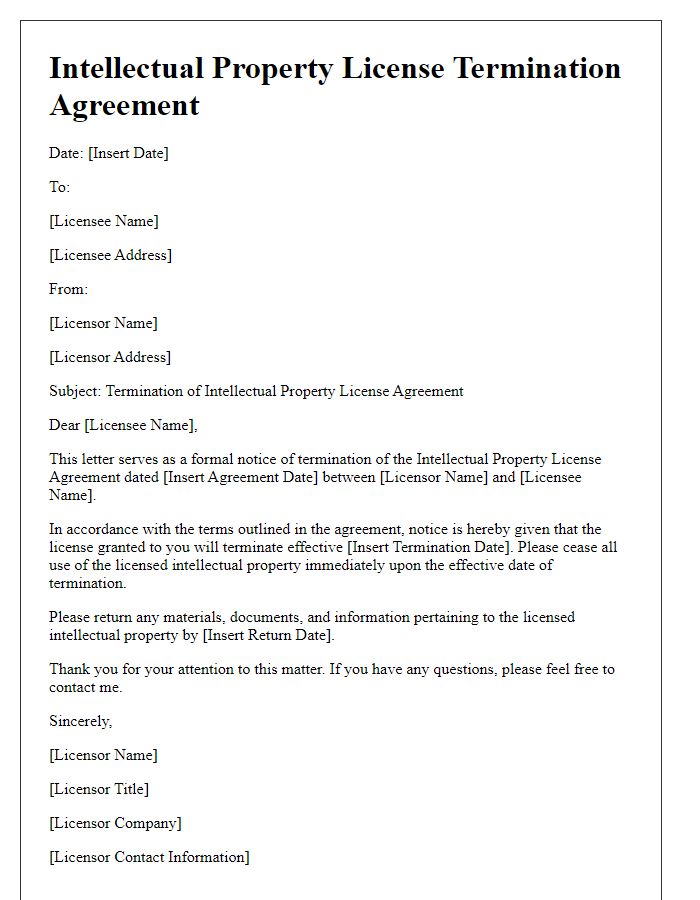Are you navigating the intricate world of intellectual property licensing? Crafting a termination letter for a licensing agreement can feel daunting, but it doesn't have to be. This letter template will guide you through the essential elements, ensuring that you communicate clearly and professionally. Ready to learn more about how to effectively close your intellectual property license? Let's dive in!

Clear identification of involved parties.
Intellectual Property License Closure involves formal documentation signaling the end of an agreement pertaining to the use of licensed intellectual property. Key parties typically include the Licensor, the original owner of the intellectual property (often a corporation or individual), and the Licensee, the entity permitted to use the intellectual property under specific conditions. Essential details regarding both parties' legal names, business addresses, and contact information must be clearly outlined. Additionally, precise descriptions of the intellectual property in question, such as patents, trademarks, or copyrights, along with effective dates of the original licensing agreement and closure details, facilitate clarity and legal compliance during the closeout process. This ensures that all obligations are fulfilled and rights are effectively reinstated to the Licensor.
Precise description of the licensed intellectual property.
The licensed intellectual property includes a collection of original software code, specifically the XYZ Application (version 2.5.3), created by Innovate Tech Solutions, Inc. This software, protected under copyright laws, features unique algorithms for data encryption and user authentication, ensuring secure communication for enterprises. In addition to the proprietary code, the license encompasses associated documentation, particularly the User Manual (ISBN 978-1-2345-6789-0), which outlines installation processes and usage guidelines. Furthermore, trademarks related to the XYZ Application, such as the logo and brand name, are part of the intellectual property package. Licensed by agreement dated June 15, 2022, the scope allows usage for commercial purposes within North America exclusively.
Terms and conditions for license termination.
Intellectual property license termination involves a formal process to conclude licensing agreements. Licensees must adhere to specific terms and conditions outlined in the agreement, such as providing written notice, typically 30 days in advance, to the licensor regarding intent to terminate. Obligations related to usage of intellectual property, such as trademarks, copyrights, or patents, continue until termination is finalized. Financial responsibilities, including any pending royalty payments, must be settled prior to the termination date. Additionally, the licensee must cease all use of the intellectual property, return any licensed materials, and remove all associated branding from products or marketing materials. Legal ramifications of a breach of contract during this process can result in lawsuits or financial penalties, highlighting the importance of compliance with the established guidelines.
Obligations and responsibilities post-termination.
Intellectual property license closure signifies the end of a contractual agreement between parties, often requiring careful management of obligations and responsibilities post-termination. Licensees must cease all usage of the licensed intellectual property, including trademarks, copyrights, patents, or trade secrets, immediately upon termination date. This includes removing all branding from products, digital media, and marketing materials associated with the licensed content. Moreover, licensees must return or destroy all copies of proprietary information received during the agreement, adhering to confidentiality clauses agreed upon in contracts. License holders should ensure that all outstanding financial obligations, royalties, or expenses are settled within a specified timeframe to maintain legal compliance and avoid potential disputes. Lastly, notification systems should be in place to confirm compliance with these obligations and facilitate a smooth transition, mitigating risks associated with intellectual property infringement.
Contact details for further communication.
Intellectual property license closure necessitates precise contact details for further communication. Essential information includes the full name of the authorized representative, specific title, and the organization's name. Reachable phone numbers, including direct line and extension, should be provided for immediate assistance. Email addresses must contain the relevant domain to ensure swift communication. Physical address should include the street name, city, state, and postal code for any formal correspondence. This structured information facilitates effective communication during the closing process.
Letter Template For Intellectual Property License Closure Samples
Letter template of Termination of Intellectual Property Licensing Contract













Comments